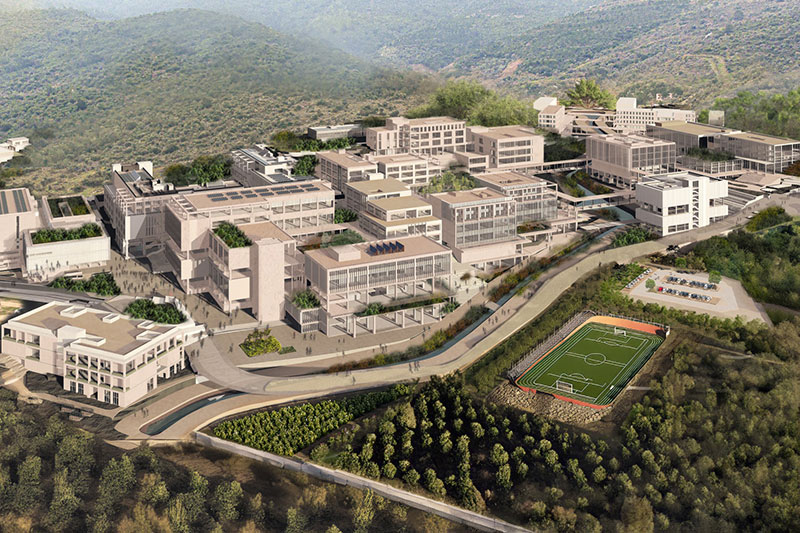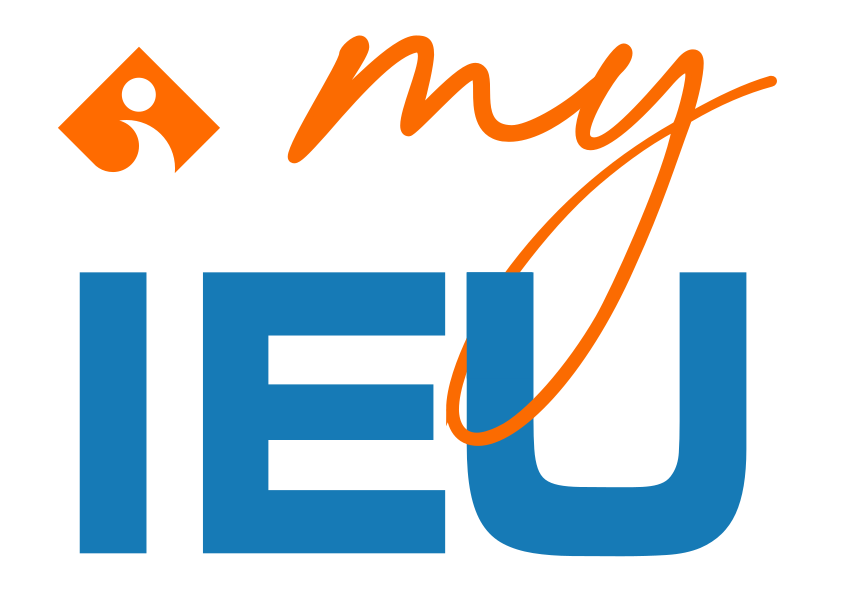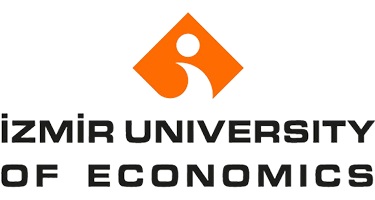ARCH 562 | Course Introduction and Application Information
| Course Name |
Integrated Spatial Analysis
|
|
Code
|
Semester
|
Theory
(hour/week) |
Application/Lab
(hour/week) |
Local Credits
|
ECTS
|
|
ARCH 562
|
Fall/Spring
|
2
|
2
|
3
|
7.5
|
| Prerequisites |
None
|
|||||
| Course Language |
English
|
|||||
| Course Type |
Elective
|
|||||
| Course Level |
Second Cycle
|
|||||
| Mode of Delivery | - | |||||
| Teaching Methods and Techniques of the Course | DiscussionQ&AField trip / ObservationApplication: Experiment / Laboratory / WorkshopGuest SpeakerLecture / Presentation | |||||
| National Occupation Classification | - | |||||
| Course Coordinator | - | |||||
| Course Lecturer(s) | ||||||
| Assistant(s) | - | |||||
| Course Objectives | This course explores spatial analysis as an integrated method for observing, interpreting, and representing urban environments. Through an interdisciplinary approach, it critically examines the material and immaterial dimensions of space across various scales, focusing on embodied spatial experiences and sensory characteristics. The course teaches techniques of documenting spatial observations to develop critical interpretations of urban environments. It encourages the development of analytical perspectives on reading space through a combination of theoretical discussion, fieldwork and representational techniques. |
| Learning Outcomes |
The students who succeeded in this course;
|
| Course Description | The course is structured around readings and discussions with an emphasis on methods of observing, analyzing and interpreting urban with a focus on various scales and dimensions of space. Lectures combine theory- and research-led readings, emphasizing urban space’s tangible and intangible aspects, methods of analysis and critical interpretation. |
| Related Sustainable Development Goals |
|
|
|
Core Courses | |
| Major Area Courses |
X
|
|
| Supportive Courses | ||
| Media and Management Skills Courses | ||
| Transferable Skill Courses |
WEEKLY SUBJECTS AND RELATED PREPARATION STUDIES
| Week | Subjects | Related Preparation |
| 1 | Introduction to the Course | |
| 2 | Ways of looking into space: Theoretical Foundations | Cuff, D., Loukaitou-Sideris, A., Presner, T., Zubiaurre, M., & Crisman, J. J. A. (2020). Urban humanities: New practices for reimagining the city. MIT Press. Carmona, M., Heath, T., Oc. T. and Tiesdell, S. (2003). Public Places Urban Spaces: The Dimensions of Urban Design, Oxford, Architectural Press. |
| 3 | Sensing Space: Embodied Experience | Zardini, M. (2005). Sense of the City: An Alternate Approach to Urbanism. Canadian Centre for Architecture. Henshaw, V. (2013). Urban smellscapes: Understanding and designing city smell environments. Routledge. |
| 4 | Walking through Space | Gehl, J., & Svarre, B. (2013). How to study public life (Vol. 2). Washington, DC: Island press. Middleton, J. (2021). The walkable city: Dimensions of walking and overlapping walks of life. Routledge. |
| 5 | Documenting Space: Observing the City | Whyte, W. H. (1980). The social life of small urban spaces. Project for Public Spaces. Chase, J., Crawford, M., & Kaliski, J. (Eds.). (1999). Everyday Urbanism. Monacelli Press. Franck, K. A., & Stevens, Q. (2006). Tying down loose space. In Loose space (pp. 1-33). Routledge. |
| 6 | Narrating Space: Spatial Storytelling | Siokoli, A., Jung, Y. (2018). Reading Architecture: Literary Imagination and Architectural Experience, New York: Routledge. Rendell, J. (2007). Site-writing: enigma and embellishment. In Critical Architecture (pp. 170-182). Routledge. |
| 7 | Term Project Presentation | Student Lectures Studio Critiques & Feedback & Projects |
| 8 | National Holiday | Student Lectures Studio Critiques & Feedback & Projects |
| 9 | No class will be held during the Midterm Week | |
| 10 | Field Research | Student Explorations & Presentations | |
| 11 | Analyzing Spatial Findings | |
| 12 | Mapping and Representing Data | Tufte, E. (1990) Envisioning Information. Graphics Press, Cheshire. |
| 13 | Feedback on Representation | Tufte, E. (1990) Envisioning Information. Graphics Press, Cheshire. |
| 14 | Term Project Submission and Presentation | |
| 15 | Review of the Semester | |
| 16 | Overall Evaluation of the Course |
| Course Notes/Textbooks | Carmona, M., Heath, T., Oc. T. and Tiesdell, S. (2003). Public Places Urban Spaces: The Dimensions of Urban Design, Oxford, Architectural Press. Chase, J., Crawford, M., & Kaliski, J. (Eds.). (1999). Everyday Urbanism. Monacelli Press. Cuff, D., Loukaitou-Sideris, A., Presner, T., Zubiaurre, M., & Crisman, J. J. A. (2020). Urban humanities: New practices for reimagining the city. MIT Press. Franck, K. A., & Stevens, Q. (2006). Loose space. Routledge. Gehl, J., & Svarre, B. (2013). How to study public life (Vol. 2). Washington, DC: Island press. Henshaw, V. (2013). Urban smellscapes: Understanding and designing city smell environments. Routledge. Middleton, J. (2021). The walkable city: Dimensions of walking and overlapping walks of life. Routledge. Tufte, E. (1990). Envisioning Information. Graphics Press, Cheshire. Whyte, W. H. (1980). The social life of small urban spaces. Project for Public Spaces. Zardini, M. (2005). Sense of the City: An Alternate Approach to Urbanism. Canadian Centre for Architecture. |
| Suggested Readings/Materials |
Resource for Urban Design Information Project for Public Space Urban Public Space Urban Sketchers |
EVALUATION SYSTEM
| Semester Activities | Number | Weigthing |
| Participation |
1
|
10
|
| Laboratory / Application | ||
| Field Work | ||
| Quizzes / Studio Critiques | ||
| Portfolio | ||
| Homework / Assignments |
1
|
30
|
| Presentation / Jury |
1
|
20
|
| Project |
1
|
40
|
| Seminar / Workshop | ||
| Oral Exams | ||
| Midterm | ||
| Final Exam | ||
| Total |
| Weighting of Semester Activities on the Final Grade |
3
|
60
|
| Weighting of End-of-Semester Activities on the Final Grade |
1
|
40
|
| Total |
ECTS / WORKLOAD TABLE
| Semester Activities | Number | Duration (Hours) | Workload |
|---|---|---|---|
| Theoretical Course Hours (Including exam week: 16 x total hours) |
16
|
2
|
32
|
| Laboratory / Application Hours (Including exam week: '.16.' x total hours) |
16
|
2
|
32
|
| Study Hours Out of Class |
14
|
7
|
98
|
| Field Work |
0
|
||
| Quizzes / Studio Critiques |
0
|
||
| Portfolio |
0
|
||
| Homework / Assignments |
1
|
30
|
30
|
| Presentation / Jury |
1
|
10
|
10
|
| Project |
1
|
23
|
23
|
| Seminar / Workshop |
0
|
||
| Oral Exam |
0
|
||
| Midterms |
0
|
||
| Final Exam |
0
|
||
| Total |
225
|
COURSE LEARNING OUTCOMES AND PROGRAM QUALIFICATIONS RELATIONSHIP
|
#
|
Program Competencies/Outcomes |
* Contribution Level
|
|||||
|
1
|
2
|
3
|
4
|
5
|
|||
| 1 |
To be able to advance specialized architectural knowledge based on qualifications acquired at the undergraduate level. |
-
|
-
|
-
|
-
|
X
|
|
| 2 |
To be able to conceive the interdisciplinary nature of the architectural field and apply such knowledge and analytical capacity to interdisciplinary studies. |
-
|
-
|
-
|
-
|
X
|
|
| 3 |
To be able to apply specialized knowledge in architecture in theoretical or practical work. |
-
|
-
|
X
|
-
|
-
|
|
| 4 |
To be able to produce new knowledge by integrating architectural knowledge with knowledge in other disciplines. |
-
|
-
|
-
|
-
|
X
|
|
| 5 |
To be able to diagnose and evaluate a specific problem in architecture and to relate this ability to publishing or practice. |
-
|
-
|
X
|
-
|
-
|
|
| 6 |
To be able critically evaluate knowledge peculiar to the architectural field, facilitate self-directed learning and produce advanced work independently. |
-
|
-
|
-
|
X
|
-
|
|
| 7 |
To be able to communicate contemporary developments in architecture and one’s own work in professional and interdisciplinary environments in written, oral or visual forms. |
-
|
-
|
X
|
-
|
-
|
|
| 8 |
To be able to consider, control and communicate social, scientific and ethical values in the accumulation, interpretation, publication and/or application of architectural data. |
-
|
-
|
-
|
X
|
-
|
|
| 9 |
To be able to critically analyze the norms that inform spatial relationships and their social implications and to develop original thesis according to guidelines. |
-
|
-
|
-
|
X
|
-
|
|
| 10 |
To be able to keep up with developing knowledge in Architecture and participate in academic and professional discussions using at least one foreign language. |
-
|
-
|
-
|
X
|
-
|
|
*1 Lowest, 2 Low, 3 Average, 4 High, 5 Highest

IZMIR UNIVERSITY OF ECONOMICS GÜZELBAHÇE CAMPUS
DetailsGLOBAL CAREER
As Izmir University of Economics transforms into a world-class university, it also raises successful young people with global competence.
More..CONTRIBUTION TO SCIENCE
Izmir University of Economics produces qualified knowledge and competent technologies.
More..VALUING PEOPLE
Izmir University of Economics sees producing social benefit as its reason for existence.
More..


